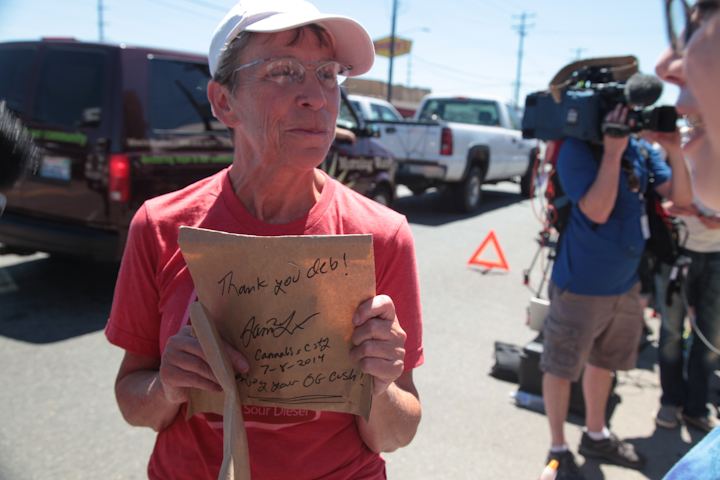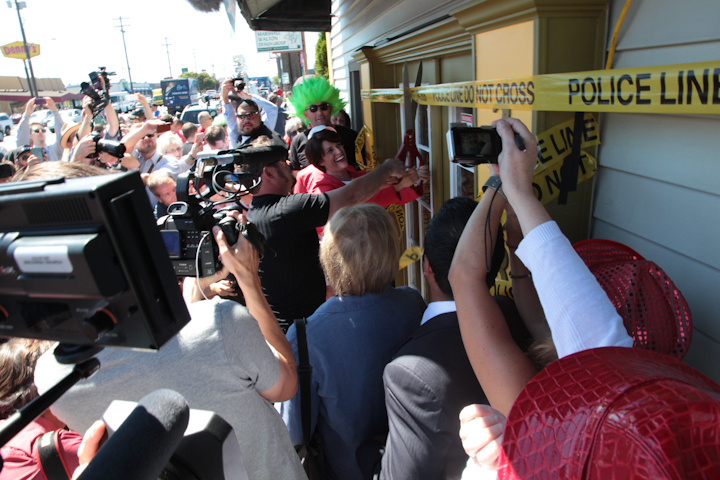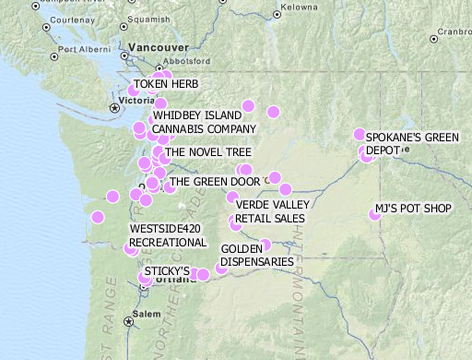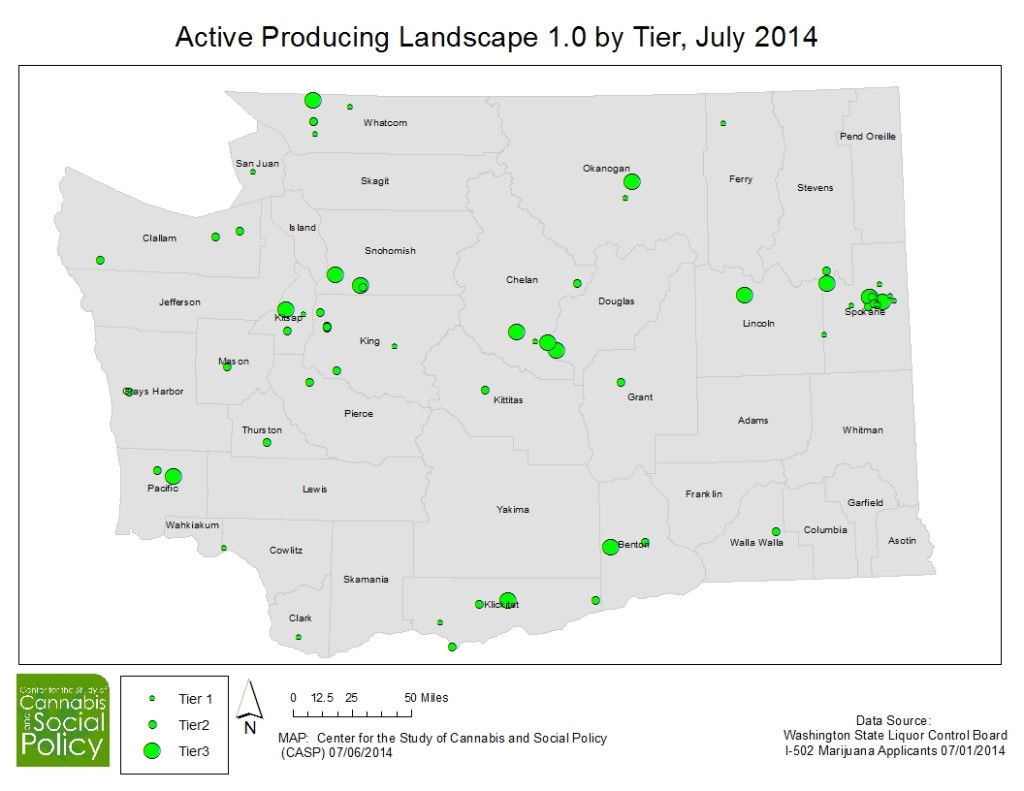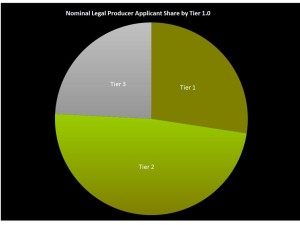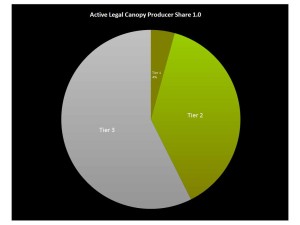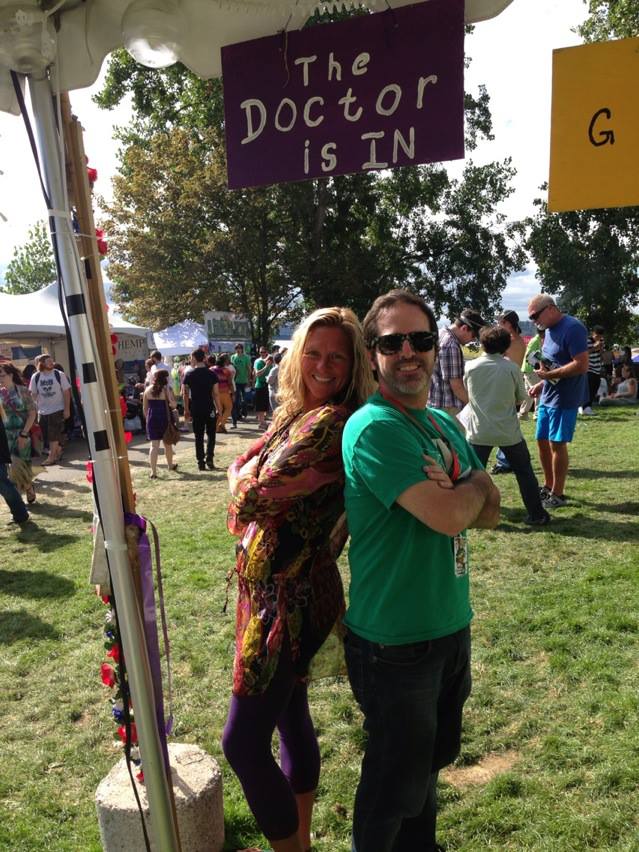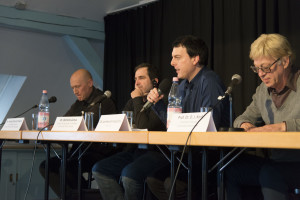by Dominic Corva, Executive Director
The first day of legal retail cannabis sales in Washington State started at 330 in the morning for me, though I was asleep. A last minute interview request from CNN had me getting up early, but apparently first thing in their morning they tried calling me to come to the studio 20 minutes earlier. By the time I woke, they had changed their mind, so after a desperate search for my own car keys I borrowed Dee’s and headed downtown uncaffeinated.
I struggled to make out where exactly the studio was in Fisher Plaza until Alison Holcomb arrived for her earlier, lengthier live interview (much deserved, of course). James Lathrop and his attorney arrived about the same time the coffee did. While I met James a few months ago, I had no idea he was even in the retail lottery, but once his big grin hit the news I called him up to get some inside scoop. Over the next few days I hooked him up with Sean Green’s active production company, which had a pound available. That increased Cannabis City’s initial supply 10%.
After the CNN “interview” (it was two softball questions and over before I knew it), CASP GIS consultant and videographer Steve Hyde picked me up to check out Cannabis City’s opening act. The space in front of the building was thick with media crews and equipment, VIPs and staff while the line stretched around the block. The entrance to Cannabis City was covered in bright yellow police tape advertising the impossible, today: DO NOT CROSS.
Viv McPeak and Kanti Selig were there, beaming. Hempfest’s Sharon Whitson reminded the crowd that people were still going to prison for marijuana and that we need to not forget about them; Alison H was there, and gave a nice ribbon-cutting speech that reminded everyone that the best reason for doing this was de-incarceration; and Pete Holmes was there, boldly announcing his intention to exercise his freedom and imagining a drug war-free future. Patient advocates held up signs and educated folks about current medical cannabis trials.
Finally James addressed the crowd with enthusiasm and grabbed some big-ass scissors. The Police Line: Do Not Cross tape met its fate, with some help from Alison Holcomb.
Once the doors were open the real wait began, as one by one people entered to by legal cannabis. A grandmother named Deb walked out first, with each two-gram package in its own paper bag. Deb first consumed cannabis in 1977, and was an occasional enthusiast until her company adopted drug testing policies. Once she retired, one of the first things she did off her “bucket list” was enjoy a joint with friends. She never went medical, though, and the last time she bought cannabis was six months ago. Recently, her dealer saw her on the news and rang her to say “So that’s why you haven’t called me!” She was a little concerned that her conservative daughter might not respond so well to her historic role, so I wished her the best as we ended our chat. The first legal cannabis customer couldn’t have been designed better to change perceptions about cannabis consumers.
At that point it became a sort of block party — Magical Butter personnel in Seahawks-flourescent-green seemed to be singing, dancing, handing out water and doing line control, music leaking from a soundbox stashed somehere in one of their little MB wagons. Pete Holmes came out with 2 grams and announced to cameras that he was preserving one for posterity, and enjoying the other one in private, himself. Pete, please be more social with your cannabis consumption. I have people who would love to help with that.
After mingling for a bit, Steve and I went to Lake City to check out the scene at the Amsterdam Exchange Farmer’s Market to catch a snapshot of gray market prices on the day of retail legalization. So here it is:
I think those prices will be approached in November 2015, when the first full round of Tier 3 outdoor and greenhouse production comes in.
